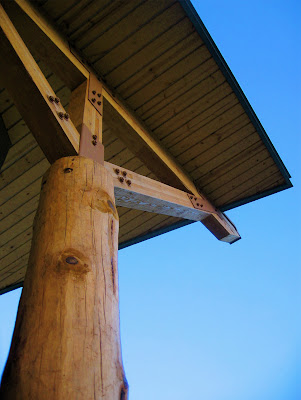You've heard it all before: building 'green' is good for the environment. That's great, but what about the green in your wallet? Don't green buildings always cost more? And what about those wacky roof lines and strange window arrangements? Do green buildings always have to look so weird?
Local architects Jeff Zucker and Matt Ackerman, both LEED (Leadership in Energy and Environmental Design) Accredited Professionals and partners in Prescott-based Catalyst Architecture, have devoted their practice to busting green-building myths just like these. With a growing portfolio to demonstrate their success, Catalyst is proving that sustainable design does not come at the price of beauty, or even at a price. As Zucker puts it, "Green buildings do not, by definition, cost more. You don't take a conventional building and then add 'green' to it. A sustainable project is more than the sum of its parts."
With energy and resource efficiency, reduced maintenance and operation costs, and careful site integration as the guiding goals for their work, Ackerman and Zucker have added a crucial design factor that contributes significantly to project success. "We consider our client's finances in evaluating the overall sustainability of each project," states Ackerman. "Sustaining financial resources is just as important as sustaining the material and energy resources of our buildings."
What does this mean for your construction project? Whether you are taking on a brand new house, or remodeling the one you're in, you can benefit from the Value Optimization Process (VOP) and the use of basic sustainable design principles.
VOP maximizes the integration of mechanical, electrical, and structural systems. This whole-system design approach nets significant gains for a project's sustainability - both ecologically and financially. And beyond the aesthetic integration of a building with the natural environment, the organizing principals of sustainable design are to provide energy-efficiency by designing the building to function passively where possible. This generally refers to the use of passive solar heating, natural daylighting and natural ventilation. When you put those passive systems in place first, you can ensure that you are minimizing your financial investment in the building's mechanical needs like heating, ventilation, and air conditioning.
Two local projects demonstrate these concepts best: a residence in the Hassayampa Golf Club, and the James Learning Center at the Highlands Center for Natural History.
Located within a Ponderosa Pine forest, this multistory Craftsman-style home in the heart of one of Prescott's premier residential communities uses traditional design and careful siting to compliment the surrounding environment; while its innovative structure modestly conceals high performance features such as a stairway that doubles as an integrated passive ventilation tower drawing cool air through the structure, and a remotely accessible heating and cooling system.
Built of AAC (Autoclaved Aerated Concrete) block, with the addition of cement fiber board siding and concrete roof shingles, this home is also highly fire-resistant. AAC block functions as both structure and insulation, offering a termite-proof wall system that also helps to modulate the indoor environment by regulating daily temperature fluctuations.
Designed to serve the Highlands Center for Natural History as their classroom and administrative offices, the James Learning Center was designed to model sustainable design solutions that can be easily applied at a residential scale. Built with wood-frame construction and traditional materials, the center is a great example of 'off-the-shelf' sustainability. Go for a visit and see for yourself how comfortable and beautiful a passively heated and ventilated building can be.
And don't forget opportunities for green remodeling. You can improve your home's bottom line with green solutions to water use, energy-efficient renovations and additions, renewable energy systems, and much, much more.
Going green doesn't have to take more green from your pocket. With creative design solutions and in-depth construction experience on your side, you really can have it all.
Related Links:



No comments:
Post a Comment